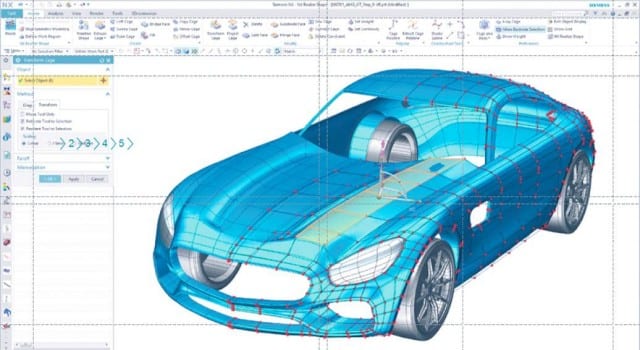Siemens and Arm have struck a deal around computing and sensor design for connected and autonomous vehicles, to help the automotive industry develop more complex platforms for in-car and between-car connectivity.
The work to redefine vehicles within intelligent and interconnected transport systems starts with on-board compute power, buried in integrated circuits and software within electronics systems in vehicles, noted Siemens.
The German firm said it will use Arm’s intellectual property (IP) and know-how in the automotive space with its own digital twin capabilities to help car makers solve challenges with the design of computing and electronics in connected and autonomous new vehicles.
It cited solutions for active safety, advanced driver assistance, in-vehicle infotainment, digital cockpits, vehicle-to-everything (V2X) and self-driving vehicles. Siemens digital twin modelling tools, under the name PAVE360 (see image), will use Arm IP to allow car makers and suppliers to simulate and verify sub-system and system on chip (SoC) designs, from the silicon level up, before vehicles are built.
The pair said that manufacturers can consolidate electronic control units (ECUs) by rethinking design of integrated circuits, leading to thousands of dollars in savings per vehicle by reducing the number of circuit boards and meters of wire within the vehicle design. This will also reduce the weight of vehicles, they said, for longer-range electric vehicles.
Dipti Vachani, senior vice president and general manager for Arm’s automotive and IoT business, said: “Developing future transportation solutions requires collaboration across complex ecosystems.
“Our collaboration redefines what is possible in terms of safety-capable, scalable heterogeneous compute. We see this as an important catalyst for the next wave of automotive semiconductor innovation.”
Tony Hemmelgarn, president and chief executive at Siemens’ digital industries software division, commented: “Our goal is to provide the most comprehensive digital twin solutions, from the design and development of semiconductors, to advanced manufacturing and deployment of vehicles and services within cities.
“[The] collaboration is a win for the entire industry. Carmakers, suppliers, and IC design companies all can benefit from the collaboration, methodologies and insight now sparking new innovations.”

